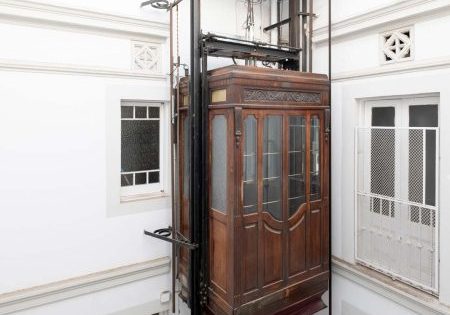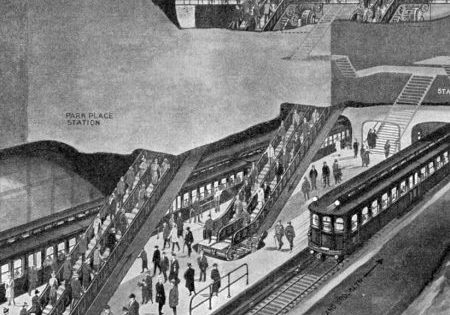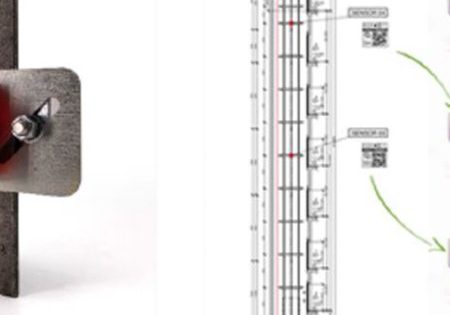“Truly Transformational”
Nov 23, 2022

Otis and its suppliers provide VT for modernised Bank Tube station in London.
In the heart of the City of London, ringed by 31 heritage-listed buildings, Bank Underground station isn’t just an intensively used interchange for the busy financial district; it’s the third-busiest station on the whole London Underground network. Between them, Bank and Monument stations are served by five Tube lines, as well as the Docklands Light Railway (DLR). Improving and modernising the station — and keeping it open for passengers throughout — was a complex, intricate operation, the result of years of engineering and design planning.
Vertical (and horizontal) transportation was no small part of it. Otis came onboard in 2013, three years before construction started, and in November had been set to commission an accessibility system that consists of 12 escalators and two moving walkways. The global OEM was hired by general contractor Dragados to perform vertical-transportation (VT) equipment design, manufacturing, installation and service for client London Underground, Otis UK & Nordics Managing Director Andrew Bierer tells ELEVATOR WORLD UK.
With Bank station traffic growing, Transport for London (TfL) issued a request for proposals from engineering firms in 2012 to upgrade the station. The main concept put forth was to dig a new Northern Line tunnel next to the existing tunnel, which would become a spacious new corridor. Four engineering firms responded: three with the basics and a few minor tweaks, but one — Dragados — “that had clearly done a lot of thinking and came back with some innovative ideas,” according to Ian Mansfield, who publishes the Ian Visits blog. Now, he says, “many of those ideas are being put into action as they change what would have been a sizable upgrade into something truly transformational.”
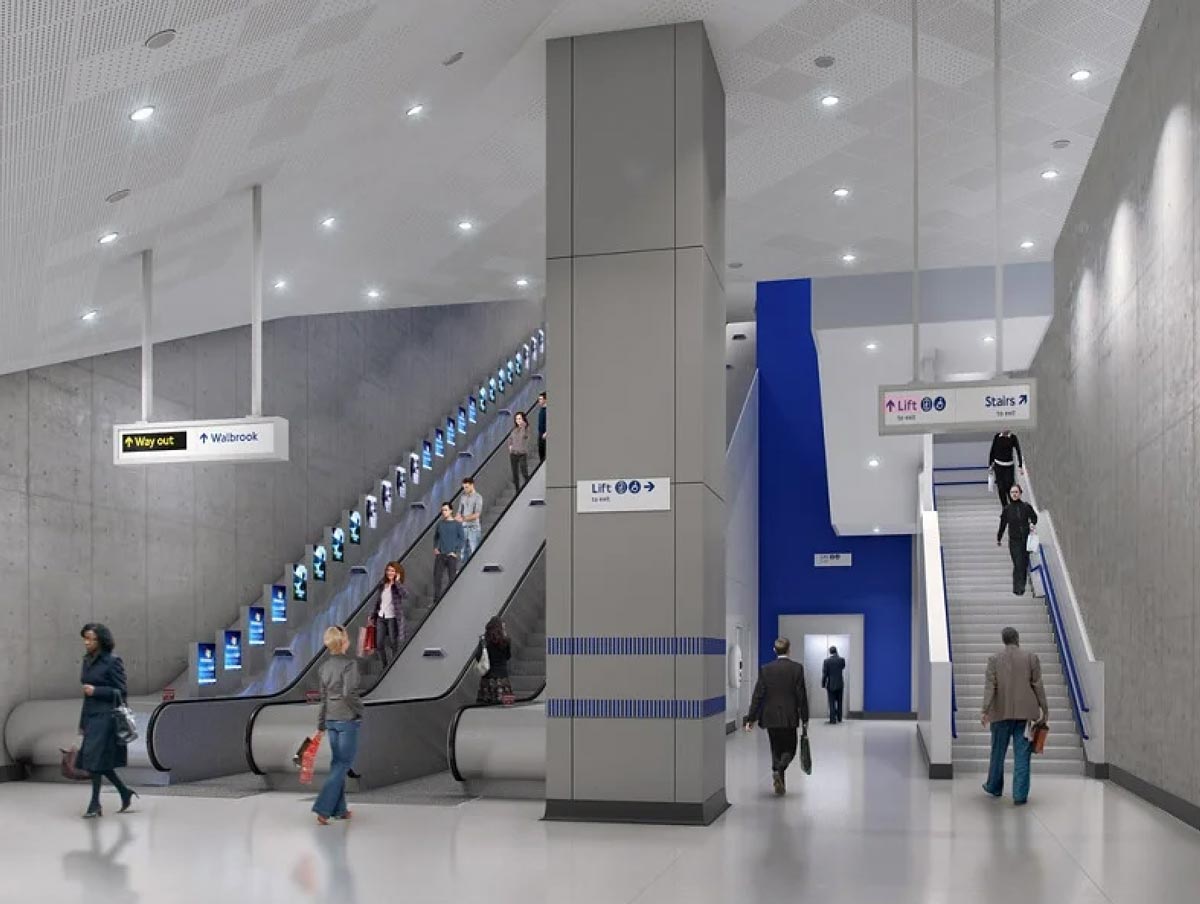
Bierer said truss delivery was challenging, due to work being at different stages in different areas. In addition, he says, managing all the subcontractors together with the Otis workforce and interfacing with all the other trades was no small task. The Bank station is now served by three 520 NPE escalators at each of four banks. All travel at 0.75 m/s. The system consists of:
- Two banks consisting of three escalators each — one with a 12.14-m rise and one with a 17.8-m rise — at the new Cannon Street entrance to the Northern Line
- One bank consisting of three escalators linking the Northern Line to DLR with a rise of 10.65 m
- One bank consisting of three escalators linking the Northern and Central lines with a rise of 7.48 m
- Two 100-m-long moving walks traveling at 0.75 m/s
When TfL announced in March the (overall) Bank upgrade had passed the halfway mark (on schedule and on budget), they observed that the 31 historic buildings at street level above the new tunnels had to be carefully preserved and that foundations of other buildings had to be tunneled through. Work was completed by teams of engineers working in shifts, around the clock. “Despite the ongoing challenges presented by the pandemic, the project is on track to be delivered as planned later this year and within the GBP700 million (US$846 million) budget,” TfL said in a Spring 2022 press release.

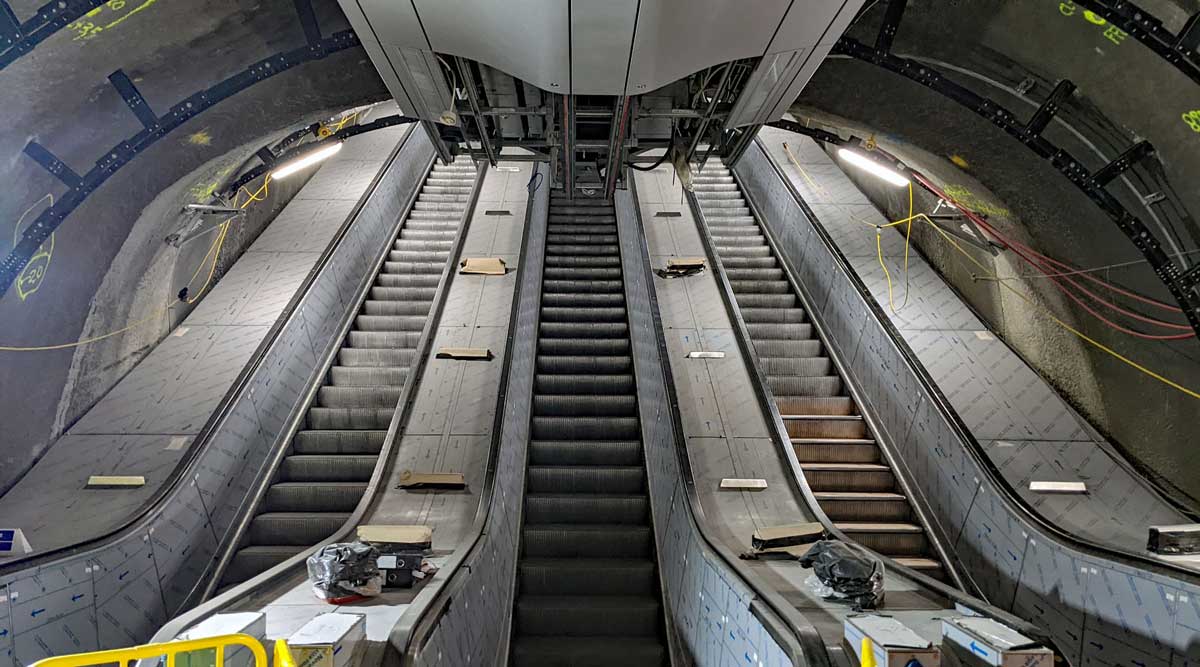
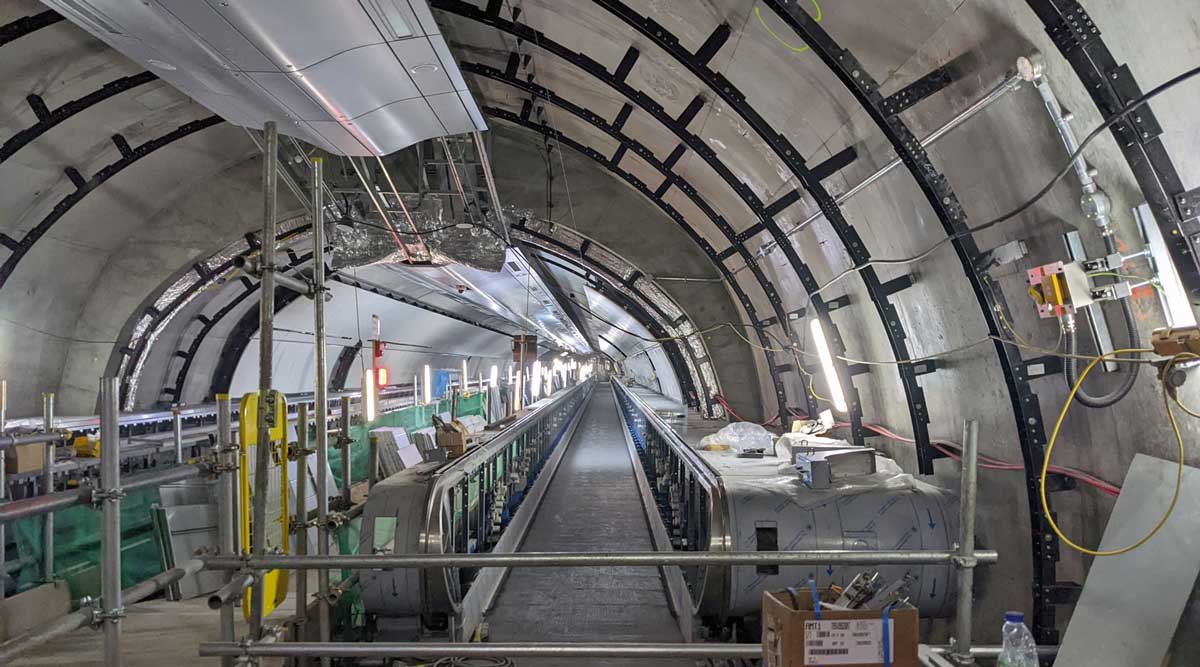
Elaborating on the “behind-the-scenes” aspect of the project, Mansfield wrote:
“It’s an upgrade that has been going on for several years, but almost all of it is hidden from view. There’s a building site near Monument, and what otherwise looks like just another office block development near Bank. However, unless you pay attention, it could be possible for even the most ardent Bank station commuter to not be aware that, on the other side of the corridors they squeeze along, huge new tunnels are being dug.”
Like the Upside Down alternate dimension on the television show Stranger Things, there’s a lot going on behind (and beneath) the scenes at the jobsite. While the fictional Upside Down is scary and malevolent, the version going on in downtown London is anything but. Mansfield observed that people leaning up against the tile walls of the Northern Line platforms waiting for trains had no idea that people were digging away “just inches behind their backs.” This behind-the-scenes work is not for the delicate. Under-construction tunnels are hot, noisy and dirty, and workers must wear full protective clothing, gloves, goggles and heavy oxygen tanks during their typical eight-hour shifts. Adding to the almost fictional aura of the work, in 2016 when shafts were being dug from the Arthur Street site, shifting of utilities resulted in the discovery of wooden foundations and a few leather shoes from London’s Roman era in around AD 47–50.
Evolution of a Major Junction
Mansfield explained that, like many other parts of the London Underground, Bank was not intended to be a major junction, even though it became one. In 1884, he says, the Circle/District line arrived at Monument. This was followed by the Waterloo & City line, aka The Drain, in 1899; the Northern and Central lines in 1900; Bank linking to Monument in 1933; and finally, the arrival of the DLR in 1991.
Bank station witnessed nearly 62 million entries and exits in 2017. Combined with large numbers of passengers swapping between lines (not to mention the Waterloo & City line and the DLR), the Bank/Monument station is busier than Heathrow airport, Mansfield pointed out, “and only getting busier.” Bank is the only direct north-south or west transport option in the City of London, and alternative travel options are few, he said.
Post-Pandemic Recovery
Public transport use was impacted by COVID-19, but with the pandemic on the wane, ridership is growing. TfL said in October:
“The opening of the new interchange between the Northern Line and DLR platform comes as London continues to recover from the pandemic. Weekday Tube ridership has grown to around 70% of pre-pandemic levels with around three million journeys now being made on the Tube each day. Tube ridership at stations defined as ‘City’ stations — including Bank — is now at around 65% of pre-pandemic levels, up from around 33% in January. Weekend Tube ridership is now regularly above 85% of pre-pandemic levels.”
Making it easier for passengers to exit stations is key to reducing overcrowding. That was the impetus for Bank station’s first major upgrade in 1960, which, incidentally, involved replacing a long moving walkway connecting Bank with the Waterloo & City line with an Otis TRAV-O-LATOR® (see sidebar). Following installation of this moving walk — the first in Europe — getting from the platform to street level took approximately 4 min (versus 10 min previously), with no overcrowding on platforms.
A site of this scope and nature requires precise construction planning, Mansfield observed. At Arthur Street, digging a shaft down to the tunnels was anything but routine, involving transporting large pieces of equipment down narrow, deep passages. “The tight space was described as trying to redecorate your living room with all the work taking place through your letterbox,” Mansfield said.
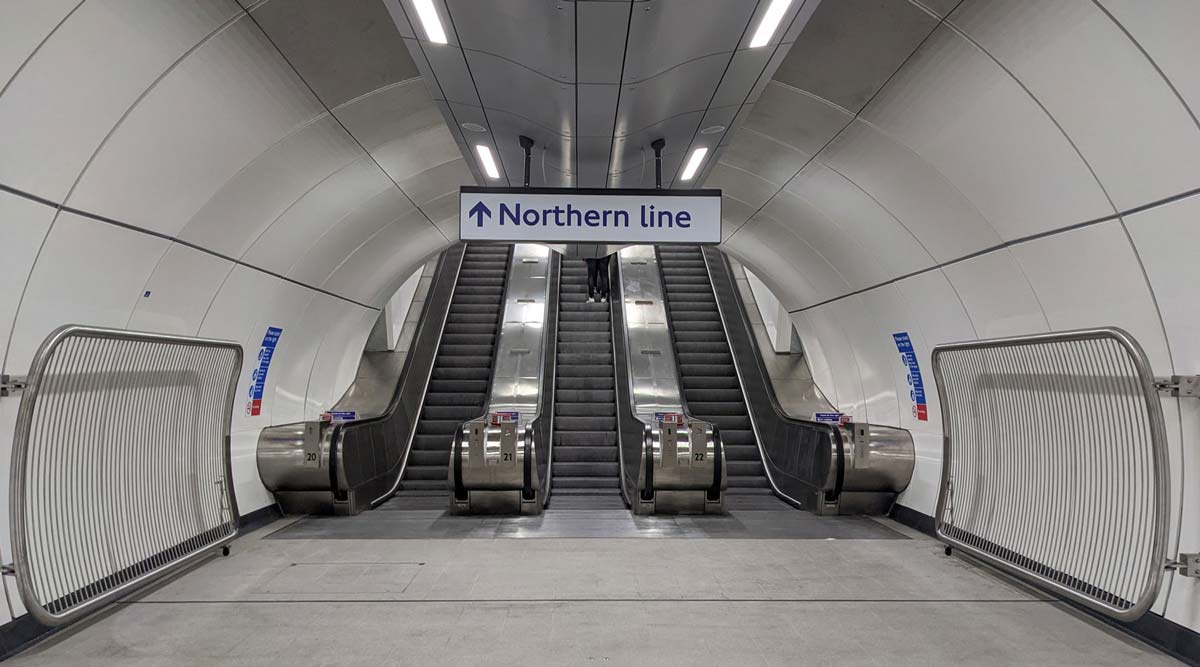
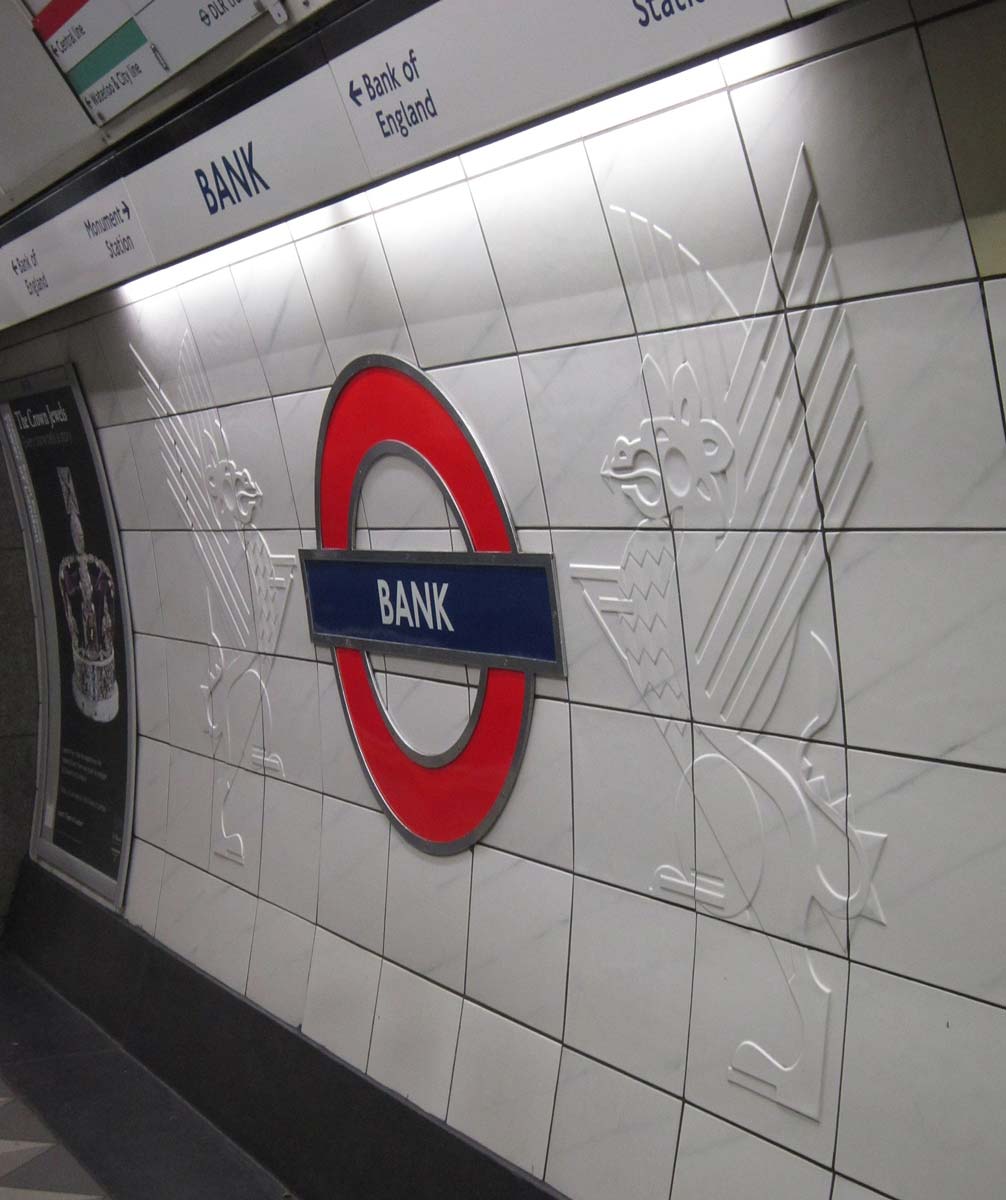

VT Suppliers From Across Europe
While Otis UK headed up the VT effort, the players involved are from all across Europe. They included suppliers from Germany (electrical components; lubrication; machinery; main drive and step chain); handrails from Austria; and a truss from Prague.
On 13 October, TfL announced the completion of a “vital phase” of the Bank station upgrade, with London Transport Commissioner Andy Byford opening the new interchange — served by three new Otis escalators — between the North Line concourse and the DLR concourse and platforms. Bank station already has 19 escalators and will have 27 once works are complete, “the largest number on the Tube network,” TfL observed.
London Deputy Mayor for Transport Seb Dance said:
“There are still more upgrades to come and, once complete, the transformed station will have 40% more capacity, supporting the recovery, growth and success of the City of London. [The upgrades] address longstanding capacity issues and will make journeys through Bank quicker, easier and more comfortable. The Mayor and I are continuing to build a better, safer and more prosperous London for everyone, and these improvements mark another step towards a modern, accessible station in the heart of the City.”
Bierer observed that Otis has had a partnership with the London Underground for more than a century. He said:
“We built the first escalators in 1911 at Earls Court station. I’m proud we are continuing that collaboration with the contribution of Otis and our U.K. employees to this amazing and intricate infrastructure project. Otis will continue to keep London moving for many decades ahead.”
TRAV-O-LATOR to Moving Walk
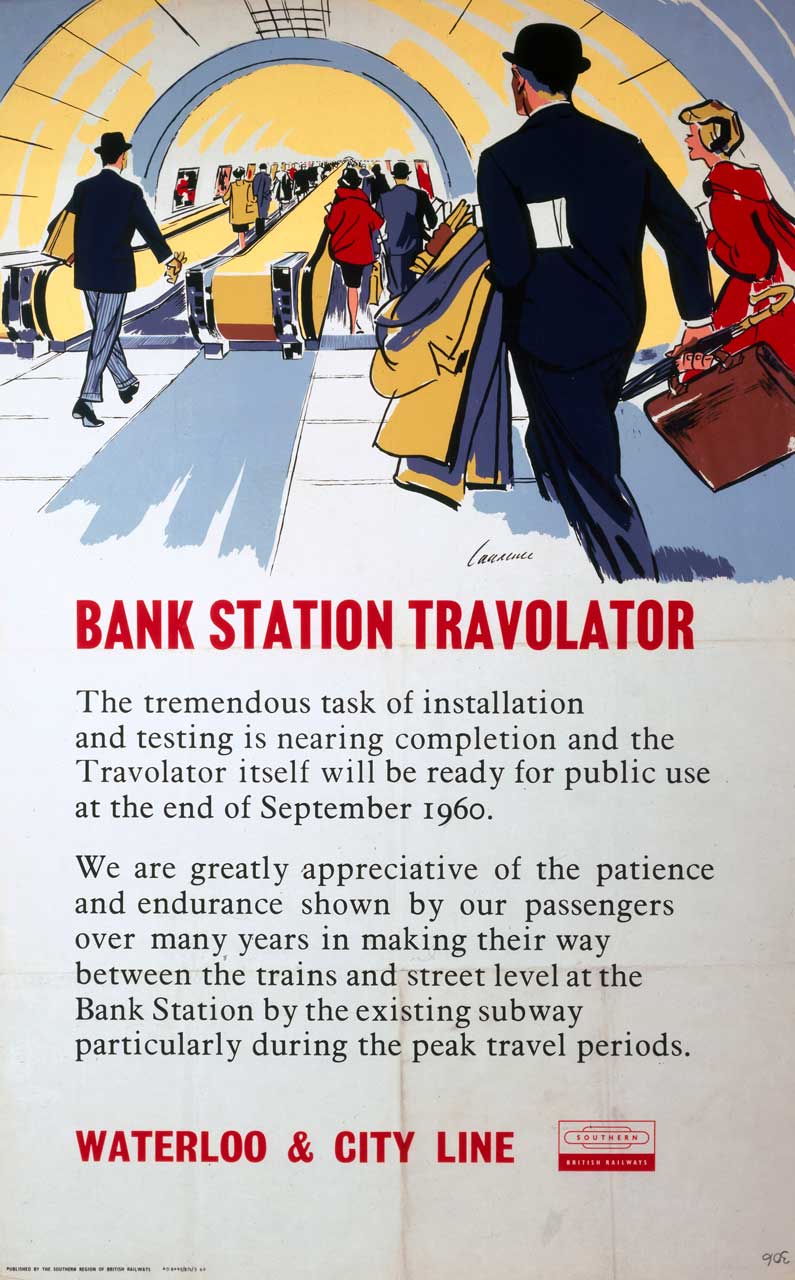
When the new and improved Bank Street station opened, it marked the 62nd anniversary of a moving walk — originally, an Otis TRAV-O-LATOR® — there. In a 2010 article for Transport News, Mansfield observes that the unit, opened to the public on 27 September 1960, was not just the first moving walk on the London Underground, but the first anywhere in Europe. Plans for a moving walk on the London Underground actually date considerably further back than 1960, Mansfield said. An accessibility solution to the sloping corridor at Bank resulted in plans being drawn up in 1903 for some sort of “travelling footway” system, which was never built. Although the concept existed, the first commercial development of a moving walk would not occur until 1954, when a unit was installed at a New Jersey train station.
The London Underground tried tackling the accessibility problem at Bank again in 1937, this time drawing up plans that involved replacing the existing, sloping tunnel with a brand-new tunnel housing conventional escalators and a new ticket hall. World War II squashed those plans — at least until 1955 when the TRAV-O-LATOR idea again emerged — and would, in a few years, become reality. Between 2000-2002, the TRAV-O-LATOR was replaced by units supplied by French engineering firm CNIM, thus the term “TRAV-O-LATOR” could no longer be used. After overcoming complications including removing “a considerable number of sewers and facilities,” the London Underground unveiled the new system: two Otis moving walks in a new, more than 6-ft wide tunnel as well as the existing tunnel, which was retained, renovated and outfitted with steps for use during morning rush hour.
References
[1] “Roman Remains Found by New Entrance to Bank Tube Station,” Ian Mansfield, Ian Visits, April 9, 2013.
[2] “Behind the Scenes at London Underground’s Bank Tube Station Upgrade,” Ian Mansfield, Ian Visits, October 9, 2018.
[3] “50th Anniversary of Bank Station’s Travolator,” Ian Mansfield, Ian Visits, September 27, 2010.
[4] “Next Phase of Vital Upgrade of Bank Station Completes, with the Opening of a New Interchange Route Between the Northern Line and DLR,” TfL, October 13, 2022.
Get more of Elevator World. Sign up for our free e-newsletter.



